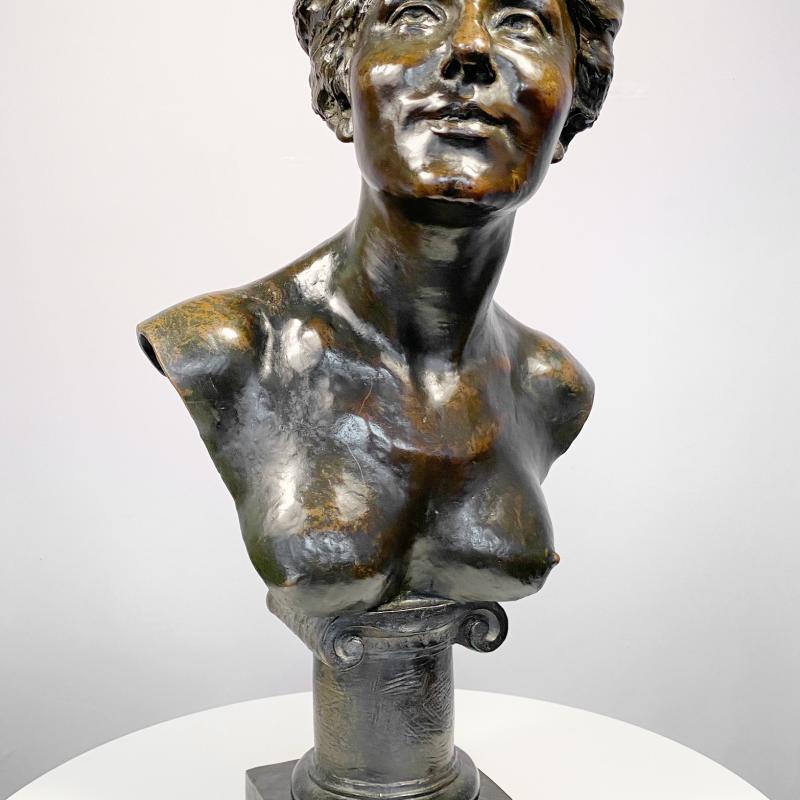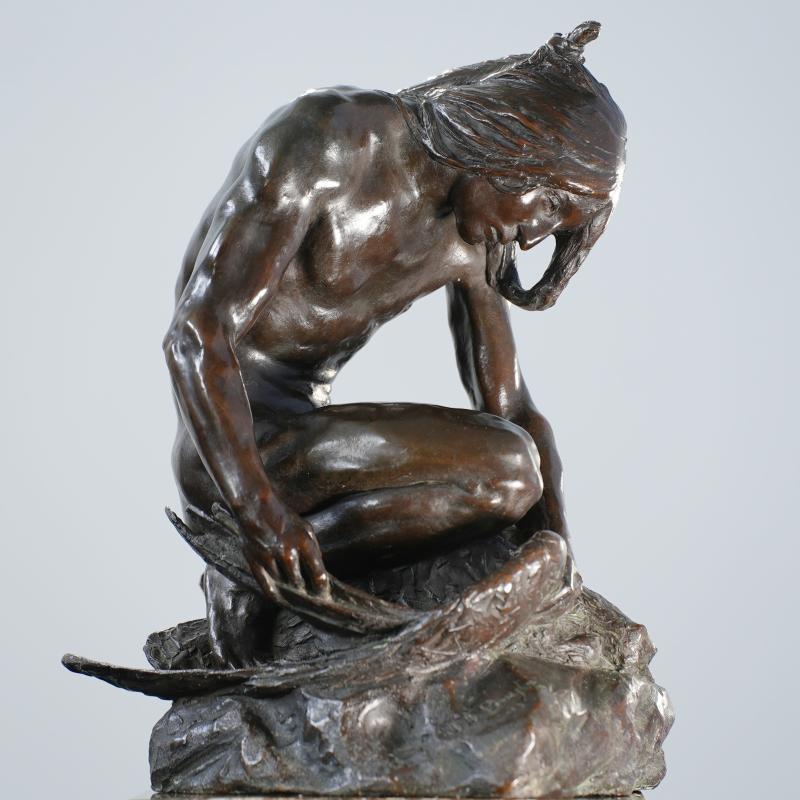-
 John Joseph BoylePortrait Head of a Woman, late 19th centuryBronze25 x 14 x 10 3/4 inchesSigned: John J Boyle
John Joseph BoylePortrait Head of a Woman, late 19th centuryBronze25 x 14 x 10 3/4 inchesSigned: John J Boyle
Marked: Bureau Bros. / Phila (rear of self base)
-
 John Joseph BoyleIndian Capturing an Eagle, 1905Bronze, dark brown patina18 1/2 x 11 1/4 x 12 1/2 inchesSigned:: JJ Boyle / 05 on self-base
John Joseph BoyleIndian Capturing an Eagle, 1905Bronze, dark brown patina18 1/2 x 11 1/4 x 12 1/2 inchesSigned:: JJ Boyle / 05 on self-base
Inscribed: To my dear friend / Leslie W. Miller / From the author
Marked: Roman Bronze Works N.Y. / N 5,
Overview
John Joseph Boyle was born in New York and raised in Philadelphia, Pennsylvania. After his father passed away, he started a career as a stonecutter to support his mother. In time he rose from a career as a stonecutter to stone carver all while studying art in the classes of Thomas Eakins at the Pennsylvania Academy. In 1877, he had saved enough money to continue his study of the arts at the École des Beaux Arts in Paris where he stayed for three years. Upon his return, he was commissioned to sculpt a Native American Family at the behest of a prominent Chicago resident. To better understand and portray a Native American Family, Boyle visited the Ottawa tribe out West to study their habits and appearance. The finished sculpture done for Chicago, “The Indian Family”, had such a powerful impact when shown in Philadelphia, that the city commissioned a similar piece called “Stone Age in America”. Boyle was at his best when rendering Native American subjects. Boyle went on to create portrait busts as well as “Plato” and “Sir Francis Bacon” for the rotunda in the new Library of Congress.
